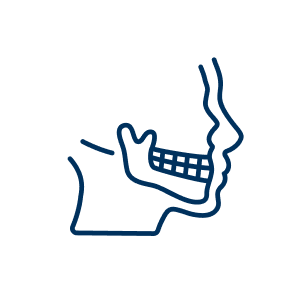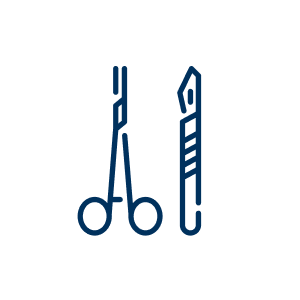
WELCOME
Our multidisciplinary team of specialist surgeons, dentists, and physiotherapists at AOMS Consulting Suites provide expert care for patients of all ages. With extensive experience and cutting-edge medical treatments, they address a wide range of conditions, injuries, defects, and aesthetic concerns related to the mouth, teeth, jaws, and face.
Whether you’ve been in an accident, suffered a sports injury, were born with a facial deformity, or need wisdom teeth extraction, you can trust the highly qualified professionals at AOMS Consulting Suites to deliver world-class care.
We’re passionate about improving the quality of our patients’ lives.
Our Services
Wisdom Teeth and Complex Dental Extractions
Wisdom teeth, also known as third molars, are the last set of teeth to emerge, typically in late adolescence or early adulthood. Due to limited space in the mouth, they often become impacted, meaning they don't fully erupt or grow in at an angle. This can lead to complications such as pain, infections, cysts, or damage to neighbouring teeth. Impacted wisdom teeth can also cause swelling, gum disease, and decay since they're difficult to clean properly. For these reasons, dentists often recommend extracting them to prevent or resolve these issues before they worsen.
Dental Implants
Dental implants are a highly effective solution for replacing missing teeth, offering a long-lasting and natural-looking alternative to dentures or bridges. The procedure involves surgically placing a titanium post into the jawbone, which acts as an artificial tooth root. Over time, the implant fuses with the bone through a process called osseointegration, providing a stable foundation for a crown, bridge, or denture. Dental implants not only restore the function and appearance of natural teeth but also help preserve jawbone health, preventing bone loss that typically occurs after tooth loss. The treatment is tailored to each patient’s needs, ensuring a comfortable fit and improved oral function.
Jaw Correction (Orthognathic Surgery)
Orthognathic surgery, commonly known as corrective jaw surgery, is performed to correct misalignments of the jaws and teeth that cannot be resolved with orthodontics alone. It is often required when a patient has significant jaw discrepancies, such as an overbite, underbite, or open bite, which can lead to difficulties in chewing, speaking, breathing, and facial aesthetics. The surgery involves repositioning the upper, lower, or both jaws to improve function and facial balance. It is usually done in conjunction with orthodontic treatment, as braces are used before and after the surgery to align the teeth properly. Orthognathic surgery can dramatically enhance a patient's ability to eat and speak comfortably, relieve jaw pain, and improve overall facial harmony
View IPS Implants® | Orthognathic Video
Facial Fracture Reconstruction
Facial fracture reconstruction is a surgical procedure designed to repair and restore the structure and function of the face after traumatic injuries, such as fractures to the jaw, cheekbones, nose, or eye sockets. These fractures can result from accidents, falls, sports injuries, or other trauma and often lead to pain, disfigurement, and functional issues like difficulty breathing, chewing, or seeing. The reconstruction process involves repositioning fractured bones, sometimes using plates, screws, or grafts to stabilize the facial structure. The goal is to restore the natural appearance of the face while ensuring that critical functions, such as breathing and jaw movement, are fully restored. Timely and precise facial fracture reconstruction is crucial for optimal recovery and to minimize long-term complications.
Obstructive Sleep Apnoea Surgery
Obstructive sleep apnoea (OSA) surgery is performed to treat severe cases of sleep apnoea, a condition where the airway becomes partially or fully blocked during sleep, leading to breathing interruptions and poor sleep quality. This blockage is often caused by excess tissue in the throat, enlarged tonsils, or structural issues in the nasal or throat area. OSA surgery aims to remove or reposition these obstructions to open the airway and improve airflow during sleep. Various surgical options, such as uvulopalatopharyngoplasty (UPPP), tonsillectomy, or jaw realignment (maxillomandibular advancement), may be used depending on the patient's specific condition. By addressing the root cause of the obstruction, surgery can reduce or eliminate apnoea episodes, improving sleep quality, overall health, and quality of life.
Oral Pathology
A patient may be referred for oral pathology when there are abnormal conditions or lesions in the mouth, jaw, or related structures that require diagnosis and evaluation. This referral is often prompted by the presence of unusual growths, persistent ulcers, unexplained swelling, white or red patches, or other changes in the oral tissues that could indicate infections, benign growths, or potentially more serious conditions. Oral pathologists specialize in identifying these abnormalities through clinical examination, biopsies, and laboratory analysis to determine the underlying cause. Early referral to an oral pathologist is crucial for timely diagnosis and appropriate treatment, ensuring the best possible outcomes for conditions ranging from minor infections to complex issues.
Head and Neck Cancer
Head and neck cancer refers to a group of cancers that develop in the tissues of the mouth, throat, larynx (throat), sinuses, salivary glands, or other structures in the head and neck region. These cancers are often associated with risk factors such as tobacco use, excessive alcohol consumption, and human papillomavirus (HPV) infection. Treatment for head and neck cancer typically involves a combination of surgery, radiation therapy, and chemotherapy, depending on the stage and location of the cancer. In some cases, targeted therapies or immunotherapy may be used. Care for patients extends beyond treatment and includes rehabilitation to address challenges such as speech, swallowing, and breathing difficulties, as well as ongoing monitoring to manage side effects and detect any recurrence. The treatment of oral cancer is complex and requires a multidisciplinary approach where practitioners work together to ensure comprehensive care and improve the patient’s quality of life during and after treatment.
Orofacial Pain
Orofacial pain refers to discomfort or pain in the face, mouth, or jaw, often stemming from a variety of causes. Common sources include temporomandibular joint (TMJ) disorders, which affect the jaw joint and surrounding muscles, dental issues such as tooth decay or gum disease, nerve-related conditions like trigeminal neuralgia, and musculoskeletal problems. Stress-related teeth grinding (bruxism) and trauma to the face can also contribute to orofacial pain. Treatment depends on the underlying cause and may include medication, physical therapy, dental interventions, or in some cases, surgical procedures. Non-invasive therapies such as stress management, relaxation techniques, and oral appliances like splints can be effective for many patients. Accurate diagnosis and a multidisciplinary approach are key to managing orofacial pain and improving a patient’s quality of life.
TMJ Surgery
Temporomandibular joint and muscle disorders (TMJ disorders) refer to a group of conditions affecting the jaw joint and the surrounding muscles that control jaw movement. These disorders can cause pain, discomfort, and difficulty in chewing or speaking. Common causes include jaw injury, arthritis, misalignment of the teeth or jaw, and chronic teeth grinding or clenching (bruxism). Stress can also contribute to TMJ disorders by increasing muscle tension in the jaw area. Treatment varies depending on the severity of the condition and may include pain relief medications, muscle relaxants, physical therapy, and oral appliances such as splints or mouthguards to reduce clenching. In more severe cases, surgical intervention may be required. A comprehensive approach to managing TMJ disorders focuses on reducing pain, restoring jaw function, and addressing underlying factors such as stress or misalignment.
TMJ Physiotherapy
Physiotherapy treatment for temporomandibular joint and muscle (TMJ) disorders is one of the first steps offered for these conditions. It can be highly effective as it addresses both the underlying causes and symptoms. TMJ disorders often result in pain, headache, and alterations to normal jaw movement (like clicking and locking) among other symptoms, which can significantly impact daily activities such as eating, speaking, concentrating and even sleeping. They can make you really miserable.
Physiotherapy for TMJ conditions is very individualised and starts with a thorough assessment and a clear explanation of the problem and its causes. This is crucial to the understanding how the treatment approach is to work for that person. Andrew Clarkson utilises a range of techniques, including manual therapy, exercises to improve joint mobility and strength, and dry needling if required and consented to. Assessment and treatment of the neck is often included in the treatment plan. Additionally, he educates patients on posture, stress management, and relaxation techniques to help reduce the impact of this tension and to prevent exacerbation of symptoms.
By utilising a commonsense approach to treatment, including strategies that people can use to help themselves, physiotherapy not only helps to alleviate current discomfort but also empowers patients with strategies for long-term management, promoting overall jaw health and enhancing quality of life.
For further information visit Adelaide Jaw Physiotherapy.
Paediatric Oral Surgery – Orthodontic Treatment
Paediatric oral surgery plays a vital role in orthodontic treatment by addressing dental and skeletal issues in children that can affect the alignment of teeth and the development of the jaw. Conditions such as tooth decay, dental extractions, and abnormal jaw growth can impede effective orthodontic intervention. Surgical procedures may be necessary to remove impacted teeth, correct cleft lip and palate, or reshape the jaw to create adequate space for permanent teeth. Early intervention is crucial, as it can enhance the outcomes of orthodontic treatment, improving both the functional and aesthetic aspects of a child's smile. By working closely with orthodontists, paediatric oral surgeons ensure that children receive comprehensive care tailored to their unique dental needs, facilitating a healthy and well-aligned dentition as they grow.
Tongue Tie - Frenectomy
A frenectomy is a surgical procedure that involves the removal or modification of a frenum, which is a small fold of tissue that connects the tongue to the floor of the mouth or the lips to the gums. This procedure is commonly performed to address issues related to tongue-tie (ankyloglossia) or lip-tie, conditions where the frenum is too tight or thick, restricting movement and potentially leading to difficulties in speech, breastfeeding, or oral hygiene. In infants, a frenectomy can facilitate breastfeeding by allowing for a better latch, while in older children and adults, it may improve speech articulation and overall oral function. Additionally, frenectomies can prevent periodontal issues caused by lip-tie, which can pull the gums away from the teeth. The procedure is typically quick, often performed under local anesthesia, and can lead to significant improvements in quality of life for those affected.












